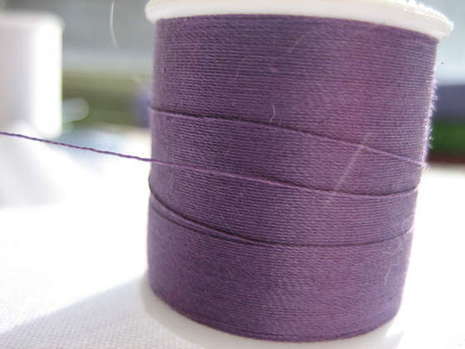Sewing machines are mighty handy indeed, but can be expensive or unwieldy for some tasks. This article seeks to cover the basics of hand-sewing: tools needed, threading the needle, knotting the thread, running
stitch, basting stitch, backstitch, slipstitch, blanket stitch, whip
stitch and finishing with knots.
- Needles – You’ll want to look for “sharps” for basic sewing.
“Betweens” are used for quilting. “Embroidery” or “crewel” needles have
larger eyes (an eye is the hole at the top of the needle) and are used
with thicker threads, like upholstery or embroidery floss. - Scissors – You’ll want a good pair of shears (normally sold with
names like “dressmaking shears”) and a pair of pinking shears. Pinking
shears have small triangular teeth that cut the fabric in a such a way
that it lessens unraveling. Smaller embroidery scissors are also good
for cutting threads. - Pincushion & Pins – You’ll pin most everything you sew to keep
the fabrics from slipping. A pincushion keeps them neat and tidy. - Measuring tape – For measuring. 😉
- Seam Ripper – This will help you correct mistakes.
- Beeswax – Sounds odd, I know. But essential for hand sewing. When
you run your thread over the beewax, it gives the thread a nice coating
that will keep it from tangling and make it stronger. - Thimbles – These can be wood, leather or metal. They’ll keep your fingers from getting sore and/or pricked.
- Thread or Floss – An all-purpose cotton thread is good for most
things. However, there are many threads to choose from. You’ll often
pick thread based on your project – cotton fabric = cotton thread, silk
= silk thread, etc. Floss is much thicker and normally comes in
six-string strands. You’ll use this for embroidery and finishing. - Fabric – Might I recommend going to your local sewing store and
buying some remnants to start off with? Remnants are small bits of
fabric from the end of a fabric roll. They’re quite cheap, I love them! - Sewing Needle Booklet – You can either keep the packaging the needles come in or make your own
Check out all of Jessy’s tips at Instructables.
